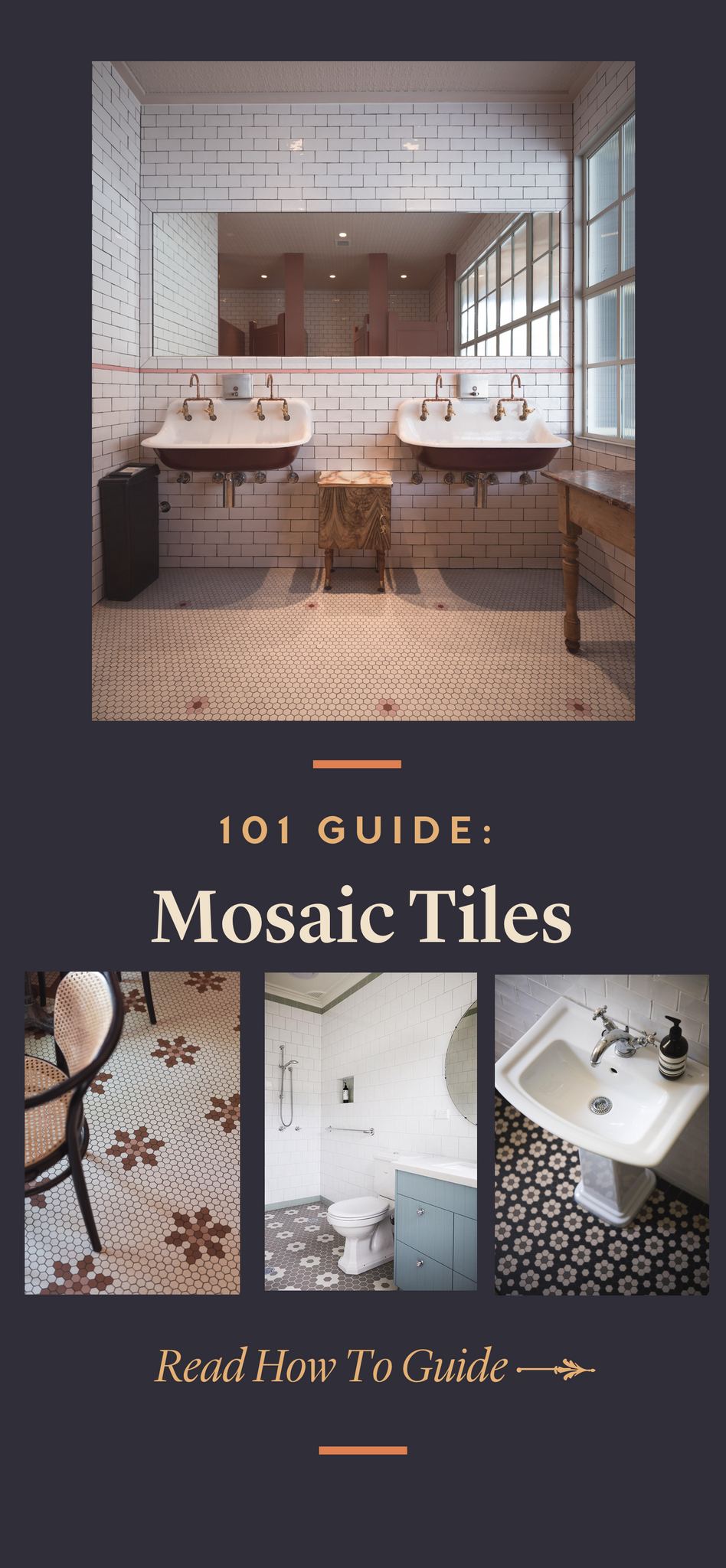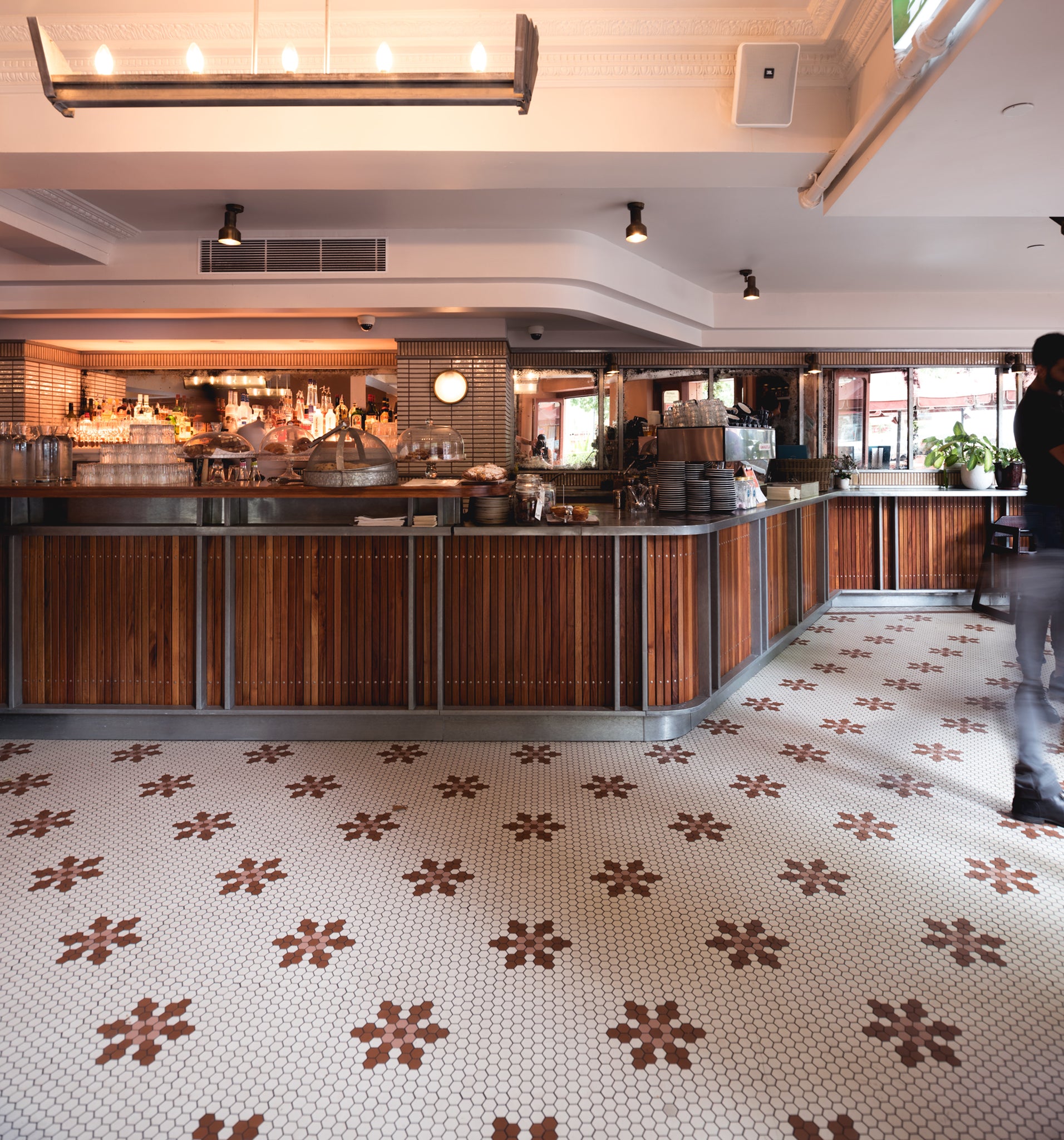Mosaic tiles can be used to add texture, colour and vibrancy to your home – here’s everything you need to know in order to choose well.
What are mosaic tiles?
Small tiles, usually measuring between 10x10mm and 30x30mm, which are made from a variety of different materials, such as porcelain, glass and natural stone. Mosaics come in different shapes, including square, hexagonal and round. They can be used to create stunning patterns and artistic effects in bathrooms, kitchens and laundries, as well as on pathways, verandahs and swimming pools.
What makes porcelain mosaic tiles so special?
Vitrified porcelain mosaic tiles are extremely durable and non-porous – unlike glass mosaics, which can crack, and marble mosaics, which are typically porous. This makes porcelain mosaics a safer and more reliable choice for floors in wet rooms and high-traffic spots, such as bathrooms, laundries, pathways, verandahs and around swimming pools.
Vitrified porcelain mosaic tiles boast an on-trend matte appearance and come in more sizes and shapes than other mosaic types, giving you far greater design flexibility. They are also more scratch- and stain-resistant, and easier to clean.

Where can I use mosaic tiles?
Just about anywhere. Unlike many other tile types, mosaics can be used on both curved and straight surfaces, giving you virtually limitless design flexibility. Apply them to the walls and floors of your bathroom or laundry, use them to create a striking kitchen splash back or island-bench facing, make a great first impression with a mosaic-tiled front pathway or verandah, or use them to add personality to your hallway floor.
For floors in wet rooms or areas prone to heavy footfall, it’s best to opt for mosaics made from high-quality vitrified porcelain, which is stronger than other mosaic-tile materials, impervious to water and has a high slip rating.



Which architectural styles are suited to mosaic tiles?
Mosaic tiles make a beautiful addition to heritage homes, particularly Victorian, Federation and Art Deco styles. But with a vast range of colours and patterns available, mosaic look fantastic in contemporary homes too.
Love an old-meets-new aesthetic? Mosaic tiles are also a great way to add a modern touch to a period home. Balance out your home’s heritage features with contemporary mosaic patterns in interior spaces such as the kitchen, bathroom or laundry. When it comes to the external areas of a heritage home, such as the pathway or verandah, we’d recommend sticking with a classic encaustic tiled or tessellated floor as these areas generally look best with more authentic heritage styling.


What’s good to know when choosing mosaic tiles?
There are a few things to bear in mind when selecting porcelain tile size and colour:
· The larger the tiles, the fewer the grout lines. This means less cleaning, which can be good news in a bathroom where mould has a tendency to build up.
· If you’re choosing mosaics for a wet room or a busy spot, such as a bathroom, laundry or pathway, it’s important to consider porosity. Ensure the tiles you select are non-porous (so they don’t absorb water) and non-slip to reduce the chance of accidental falls.
· There are no rules when it comes to blending tile shapes and colours – it simply comes down to the look you’re trying to create. Keep in mind that a simple tile layout in a limited palette of two or three low-key colours is more likely to blend into your room scheme, while a more elaborate mix of shapes and hues will make your tiled surface the star of the show.
How do I choose the right mosaic tiles for my bathroom?
First, consider the look you want to create. Do you want to give your bathroom a heritage look or a more contemporary feel? Would you like to create wow factor with a bold feature wall or floor, or would you prefer a more low-key, tonal effect? Are you looking to recreate the feel of a luxury hotel or is your style more playful and eclectic?
The answers to these questions will help steer you towards the right pattern and colours for your bathroom. Rich, earthy tones and intricate patterns will give your bathroom an authentic heritage feel. Lighter tones, pops of bright and simple patterns will look more modern. To make a bold statement, consider a painterly pattern with curves and swirls crafted from mosaics in different shapes and hues. Or, for a sleek, contemporary feel, run mosaics in one colour from the floor to one or two walls. For added interest, you could use one tile shape on the floor and a different one on walls – but keep the colour consistent for that all-important flow.
How do I choose mosaic tiles for a small bathroom?
When choosing tiles for a bathroom, it’s important to factor in the size of the space. In general, larger bathrooms can take richer colours and more elaborate patterns than smaller ones. Small bathrooms tend to benefit from simpler patterns and paler tile colours that will bounce around the light.
If your bathroom is on the small side, there are a few clever ways you can use tiles to make the space feel bigger than it is. Consider running the same mosaic tile colour or colours from the floor to the walls to create a seamless sense of flow. Or, try laying mosaic floor tiles on the diagonal so the eye is drawn from one corner of the room to the other, which will create the illusion of more space.
How do I create a warm and sophisticated look with porcelain mosaic tiles?
This largely comes down to the tile colours and patterns you choose. Darker tones such as charcoal, rich brown and forest green will create a sophisticated look. If you’re concerned they might appear too heavy or overwhelming in your bathroom, balance them out with lighter tones in your painted surfaces and bathroom fixtures.
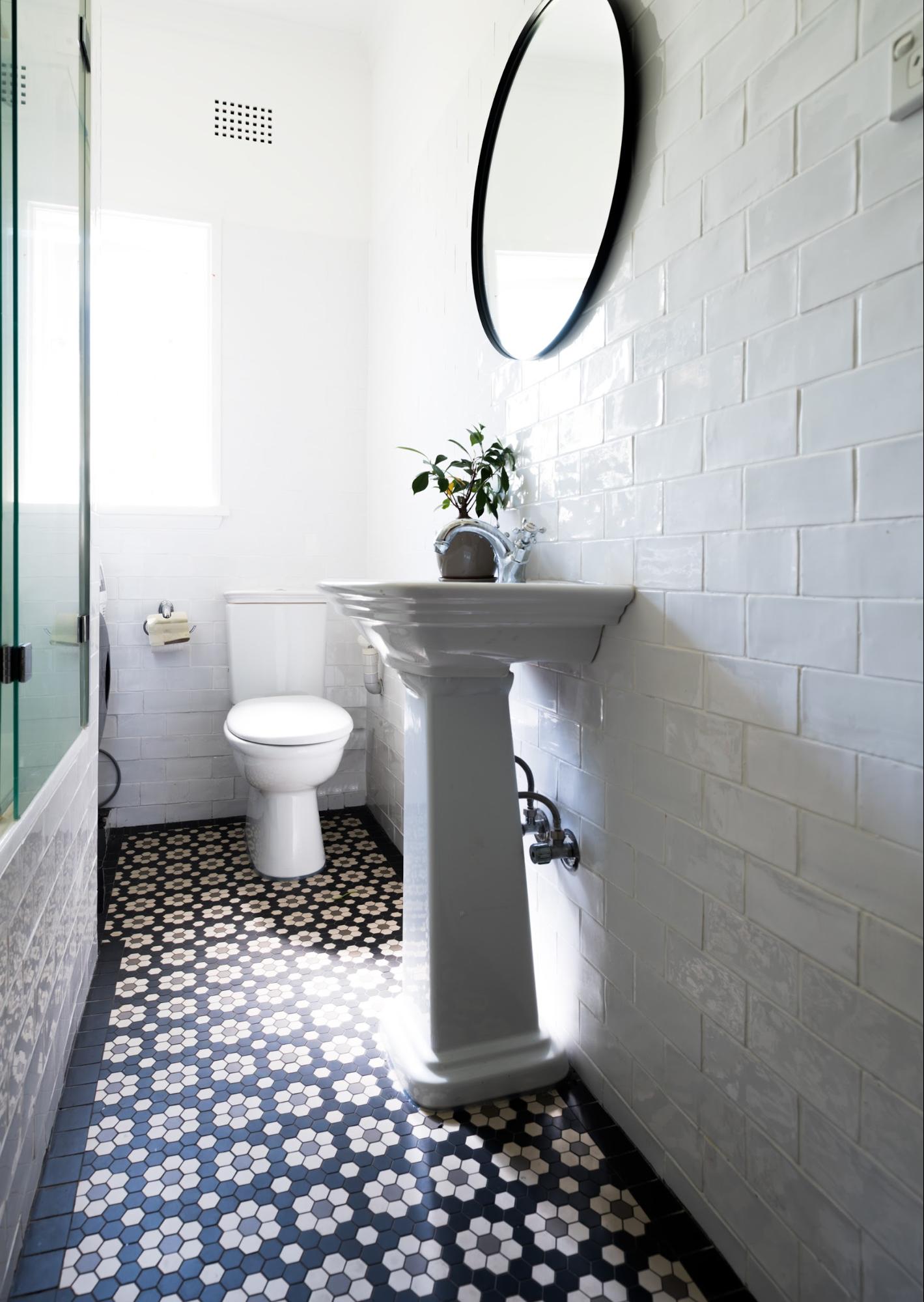

Another way to create a chic and inviting look is to mix mosaic tiles with other tile types. You could, for example, use classic subway or encaustic tiles in neutral colours across the main surfaces in your bathroom and make a feature of your shower niche or vanity splash back by lining them with dramatic mosaic tiles. Using mosaics in small doses is also a smart way to keep your budget in check without sacrificing style.

How do I style mosaic tiles?
Balance intricately patterned mosaic tiles out with simple, streamlined tapware, a curved, freestanding bathtub, towels in block colours, and textural accessories.
How do I choose the right grout for porcelain mosaic tiles?
There are two main types of grout to choose from – epoxy grout, which is made from epoxy resins and a filler powder, and cement grout, which is made from a cement-powder mix. Epoxy grout is more durable and waterproof than cement grout, making it a better choice for bathrooms and wet areas.
The colour of the grout you choose will have a significant effect on the finished look of your tiles. You can have grout custom coloured to match or contrast with your tiles; a matching grout will give you a seamless look with no visible grout lines, while a contrasting grout colour will highlight the individual shape of your tiles and create a more graphic, grid-like appearance.
Grout colour can also affect how often you need to clean. Light-coloured grout tends to show more dirt, while darker grout conceals dirt and can extend the time between cleans.
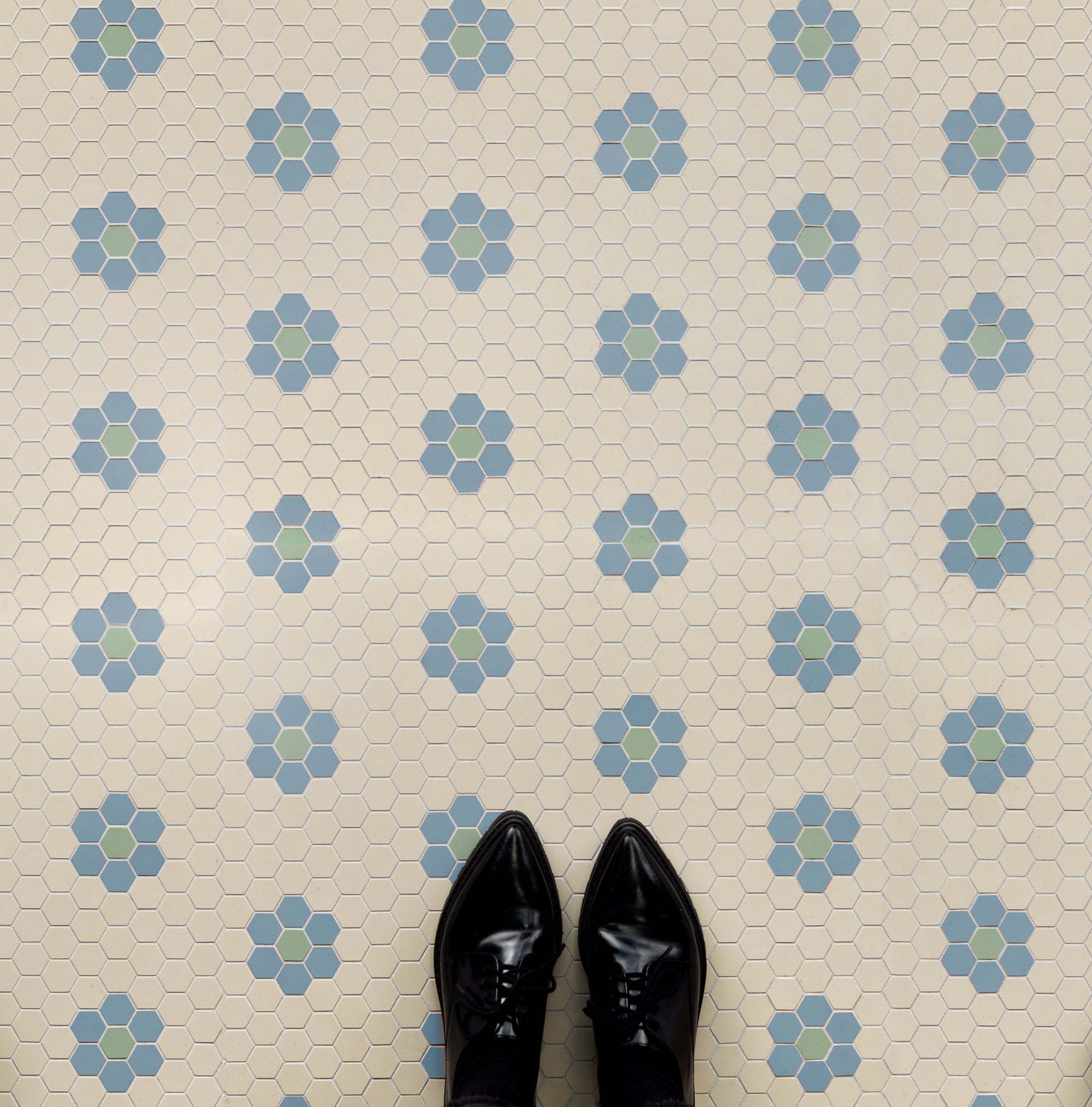
Can any tiler lay mosaic tiles?
Laying mosaic tiles – even sheeted ones – is a complicated business and requires specialist skills. Look for a tiler who is experienced in laying mosaic tiles and ask them the following questions:
· How many years of experience have they had laying mosaic floors?
· Where did they train as a mosaic tiler? · What is their general process for laying a mosaic floor?
· Will they screed the floor? Do waterproofing?
· What are the supplied mosaic tiles made from? This will affect how resistant to cracking, fading and scratching they are.
How do I clean and care for a porcelain mosaic-tiled floor?
For basic maintenance, simply wipe over your mosaic-tiled floor with a damp mop, warm water and a small (no more than a teaspoon) amount of detergent. Scrub floor firmly in a circular motion. To avoid damaging the surface of your mosaic tiles, avoid using bleach, caustic soda or any general floor cleaners on the market.
Olde English Tiles mosaic range
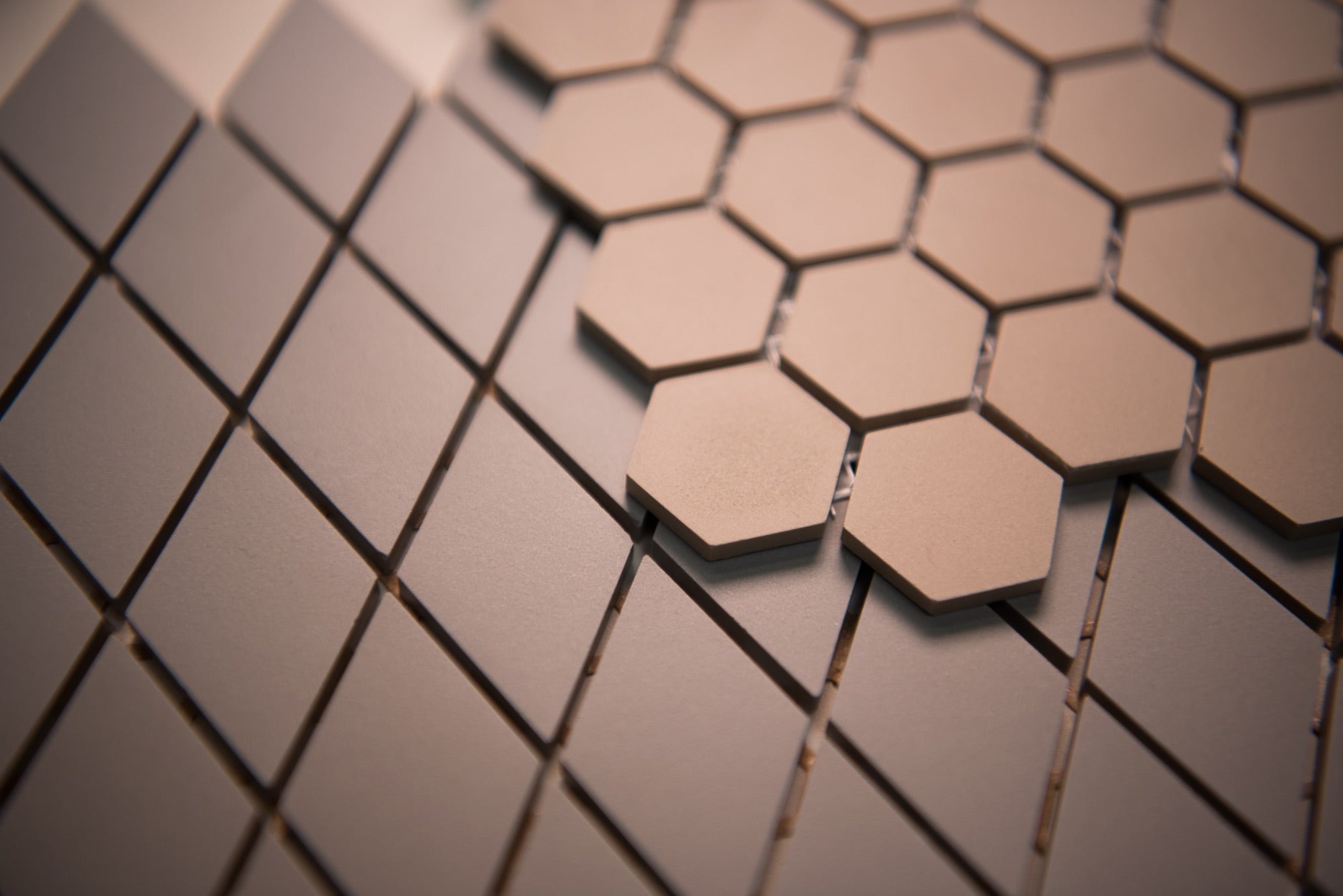
What shapes and sizes do porcelain mosaic tiles come in?
Our porcelain mosaic tiles range from 10x10mm to 50x50mm in size, and come in several shapes, including square, hexagonal, diamond and round.
Which patterns do porcelain mosaics come in?
Click here to see our wide range of classic and contemporary mosaic-tile patterns. If you can’t find what you’re looking for or want a one-of-a-kind pattern or colour combination, we can custom make it for you.
How durable are your porcelain mosaic tiles?
Vitrified porcelain mosaic tiles are crafted to look and perform brilliantly decades. They are scratch-, stain- and crack-resistant, non-slip, non-porous, and tough enough to withstand years of heavy footfall. This page elaborates on the technical features and benefits of our mosaic tiles
How are mosaic tiles sold?
Our porcelain mosaic tiles are sold in sheets, making them far quicker and less expensive to install than laying individual tiles.
Searching for mosaic tiles? View our existing patterns or make contact to discuss your project
